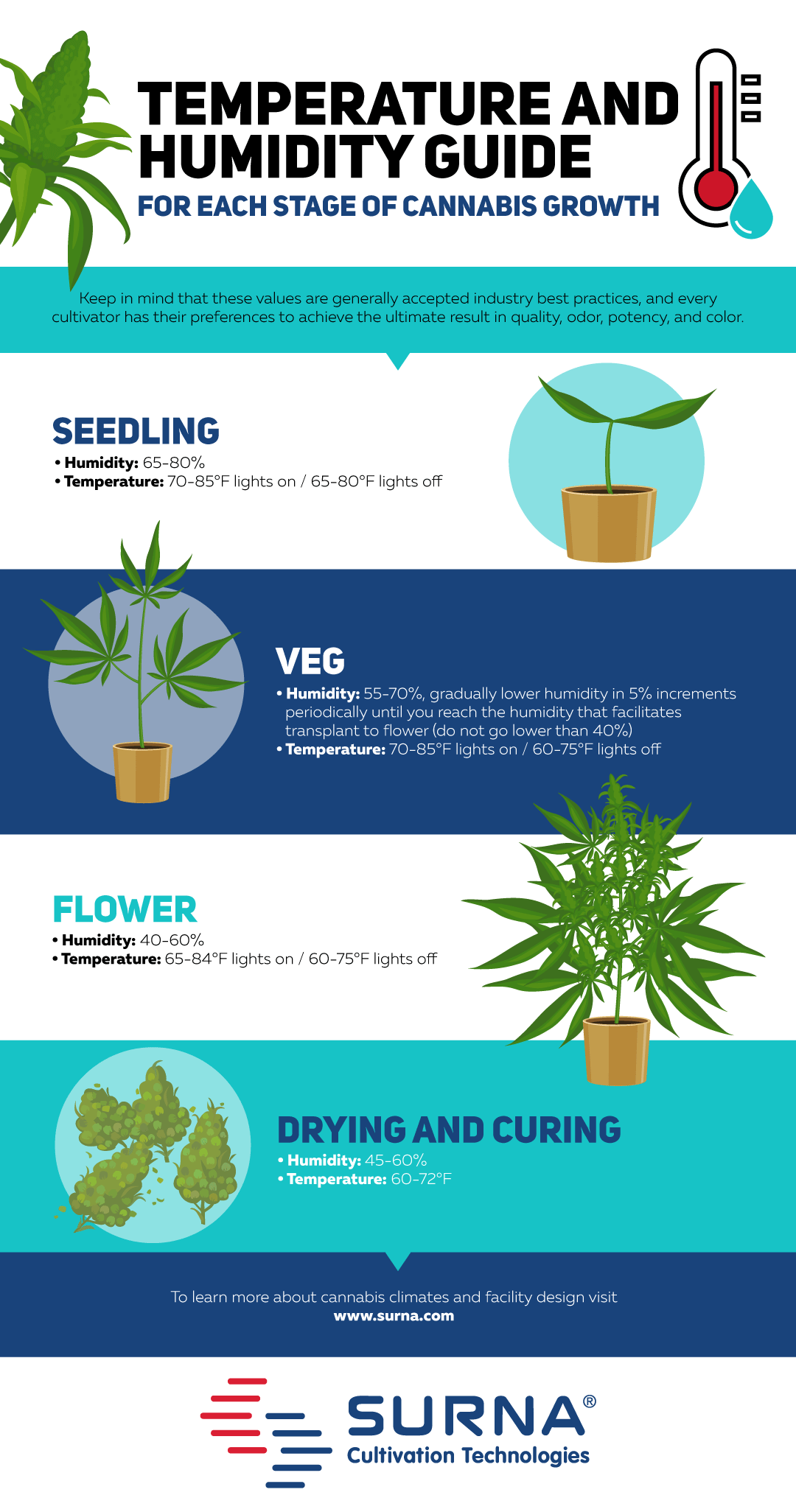We are often asked what the ideal grow room HVAC parameters are for cannabis production. There are several factors that influence each other to create your grow room’s climate including temperature, lighting intensity and wattage, watering schedules, and VPD. It’s important to treat each of these factors systemically, and to work with vendors who know how to approach your climate needs as part of a bigger picture.
That aside, we do know there are certain ranges that yield the most desirable results. These are loose guidelines, and we encourage you to discuss your climate goals with cultivation experts and your mechanical engineer to ensure you receive a practical solution that meets your expectations. Often, cultivators might enter the design process with a “wish list” only to learn too late (after the design is already complete) that it’s way out of budget and have to go back to the drawing board. Cultivators who work with mechanical designers like Surna, who are able to help with budgeting before the design goes very far, tend to get to market faster, and with fewer surprises.
What's the Best Temperature and Humidity Level for Cannabis?
When it comes to cannabis cultivation, humidity and temperature levels should be regulated at each stage of a cannabis plant’s life in order to promote healthy growth.
This is because as the plant develops, so too do its needs and its capabilities. For instance, when a plant is very young, it does not have the same robust root system as when it does once it matures. This will affect its ability to uptake water and nutrients, which will affect its transpiration rate, which will affect its ideal humidity and temperature levels.
Keep in mind that these values are generally accepted industry best practices, and every cultivator has their preferences to achieve the ultimate result in quality, odor, potency, and color. Some cultivators may choose to experiment with lower or higher temperatures and humidities during certain times of the growth stage to accomplish a specific stress response or expression that influences the final product. Generally speaking, most cultivators opt for a slightly higher air temperature with LED lighting than with HID lighting, because the leaf temperature tends to be slightly lower with lower wattage LED’s. However, this will vary with LED intensity and manufacturer recommendations.
Seedling Humidity and Temperature
- Humidity: 65-80%
- Temperature: 70–85°F lights on / 65–80°F lights off
 At this stage, your plants have not yet established their root systems. Creating a high-humidity environment in your nursery or clone room will reduce transpiration through the leaves and take the pressure off the immature root systems, allowing the root system to catch up before ramping up VPD and transpiration.
At this stage, your plants have not yet established their root systems. Creating a high-humidity environment in your nursery or clone room will reduce transpiration through the leaves and take the pressure off the immature root systems, allowing the root system to catch up before ramping up VPD and transpiration.
Many growers opt to start clones and seedlings in mother or veg rooms, in which case they may use plastic humidity domes to help retain moisture (and in some cases heat), allowing them to share space with more mature plants without similar environmental constraints. However, if you use these domes, ensure they have proper ventilation to prevent building up too much moisture and to ensure exchange of CO2.
Veg Room Humidity and Temperature
- Humidity: 55-70%, gradually lower humidity in 5% increments periodically until you reach the humidity that facilitates transplant to flower (do not go lower than 40%)
- Temperature: 70-85°F lights on / 60-75°F lights off
 Once your plants have reached the vegetative stage, you can begin gradually stepping down the humidity. This will give you time to prepare the plants for flower. Until then, they will further develop their root systems and complete the majority of their leafy growth and stem elongation.
Once your plants have reached the vegetative stage, you can begin gradually stepping down the humidity. This will give you time to prepare the plants for flower. Until then, they will further develop their root systems and complete the majority of their leafy growth and stem elongation.
Cannabis veg humidity should start between 55% to 70%, and incrementally decrease to the humidity level you will use in flower. Do not lower the veg room humidity below 40%.
Flower Room Humidity and Temperature
- Humidity: 40–60%
- Temperature: 65-84°F lights on / 60-75°F lights off
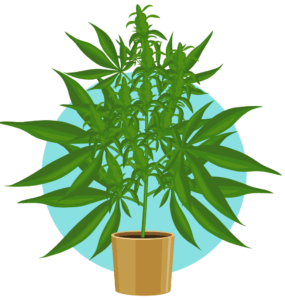
The ideal cannabis flowering humidity is between 40% to 60%. During flower, lowering your relative humidity level can help prevent mold and mildew from forming. To accommodate the lower RH, cooler temperatures will also help you maintain your ideal VPD. Avoid high temperatures above 84°F, especially during the second half of flower. High temperatures at low humidities can quickly dry your plants out and cause them stress, which is bad for your yield.
Drying and Curing Humidity and Temperature
- Humidity: 45-60%
- Temperature: 60-72°F
 Your grow room HVAC control needs do not end postharvest. Your drying room should maintain a humidity around 45% to 60%, and you should keep temperatures down. Your buds will continue to release moisture as they gradually dry out, but dropping your humidity too much could cause them to dry prematurely which will ruin their taste and quality. Also, temperatures above 80°F can damage terpenes or cause rapid drying as well, so beware of high temps.
Your grow room HVAC control needs do not end postharvest. Your drying room should maintain a humidity around 45% to 60%, and you should keep temperatures down. Your buds will continue to release moisture as they gradually dry out, but dropping your humidity too much could cause them to dry prematurely which will ruin their taste and quality. Also, temperatures above 80°F can damage terpenes or cause rapid drying as well, so beware of high temps.
Feel free to save the infographic below!
How to Maintain a Consistent Grow Room Climate
Properly maintained temperature and humidity conditions are critical for a successful grow room. There are several factors that play into your ability to properly control your cannabis facility’s environment.
Cooling and Heating
Cooling and heating can be accomplished in various ways. While each has complex mechanics and pros and cons, we will highlight a few common options and attempt to summarize them briefly for the sake of this article. For more in-depth information, check out our white paper on HVAC technologies for cultivation climates.
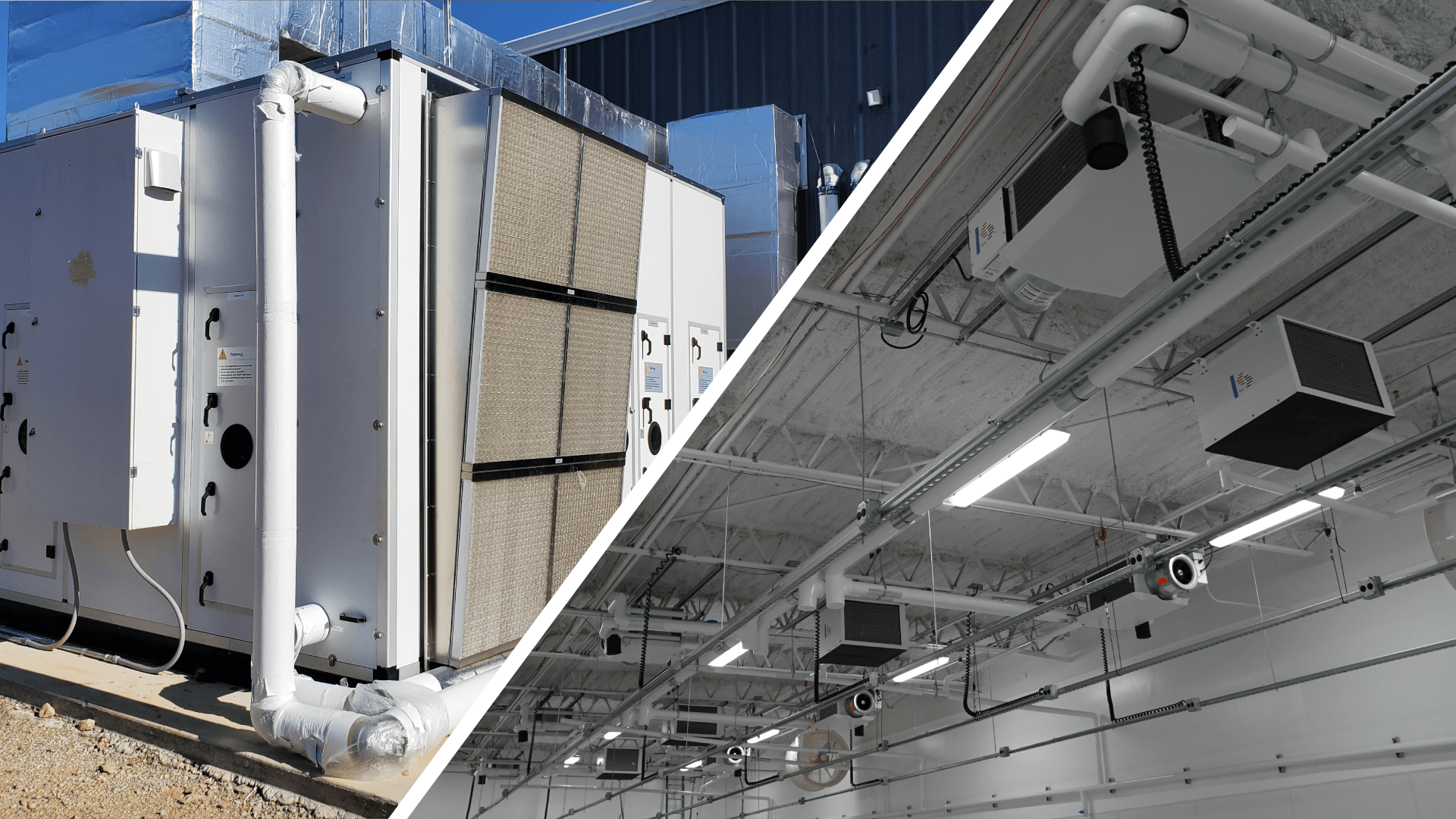
In a closed-loop chilled water system, ductwork is replaced by pipes that feed cool and warm water between fan coil units and a central unit located outside of the grow space. In this approach, the grow room air passes over conductive coils filled with cool water, or if necessary warm water, transferring heat between them. This avoids the need to share air between rooms and is typically very energy efficient and precise. Chilled water grow room HVAC systems tend to come with a higher price tag, however, and require a skilled installer to avoid leaks and other problems.
Direct expansion (DX) systems can describe split or packaged units, with or without integrated dehumidification. In a split system, the condenser and compressor are separated and located outside the facility while its evaporator and fan are located inside. Conversely, a packaged unit contains all components in one. These systems vary greatly in size and cost, and they become even more complex if you integrate dehumidification capabilities.
Variable refrigerant flow (VRF) systems differ from DX systems in that the flow of refrigerant will change depending on the load, whereas DX systems typically utilize a fixed volume of refrigerant (with complex modulation in most integrated dehumidification versions). With standard DX, the system will kick on when it senses a high temperature demand and turn off once the setpoint has been achieved. With VRF, the system can move refrigerant to the rooms where it’s needed at any given time, therefore varying the refrigerant volume in any given room. VRF tends to be slightly less expensive upfront than chilled water, but it is not quite as flexible, and its energy efficiency tends to be overstated in cultivation applications. This is because while its variable operation sounds great in theory, its EER tends to be discussed in the context of traditional comfort cooling applications without taking the large, constant cooling and dehumidification loads of indoor agriculture into consideration.
Clearly, there are a wide variety of technology approaches to cooling and heating available, each ranging in cost, efficiency, precision, and application. It is also worth noting that the overall cost of your grow room HVAC system is less important than the cost per ton. For example, the cost per ton of a VRF system remains fairly constant no matter how big the facility or individual grow room. This is because with VRF, the condensing units are limited in tonnage, so you will simply add more units if you need more tons. With chilled water, however, the bigger the chiller you select, the lower the cost per ton tends to be, meaning that larger facilities with higher cooling loads will pay less per ton than smaller operations. It’s sort of like buying your tons in bulk. Packaged DX systems (with or without integrated dehumidification) tend to land somewhere in the middle and decrease slightly with bigger facilities—more so than with VRF, but usually not as much as chilled water.
Be aware that most providers will operate in one of two ways. Either your mechanical engineer will provide a design and refer you to a supplier who can try to meet those specs with their equipment, or they will create a design that meets the specs of the equipment they already offer.
Either way, the focus on what best serves your project is lost. That is why we have built our business model differently. We can supply a wide selection of climate control equipment, giving us the freedom to design a system that actually serves your interests.
Humidity Control for Cannabis
Growers who underestimate their dehumidification needs put their facilities at risk of limiting transpiration and nutrient uptake, resulting in reduced yields, or worse, severe crop damage from mildew, mold and other fungi. Plants that aren’t at peak health are also more susceptible to pests and pathogens they might otherwise not be affected by.
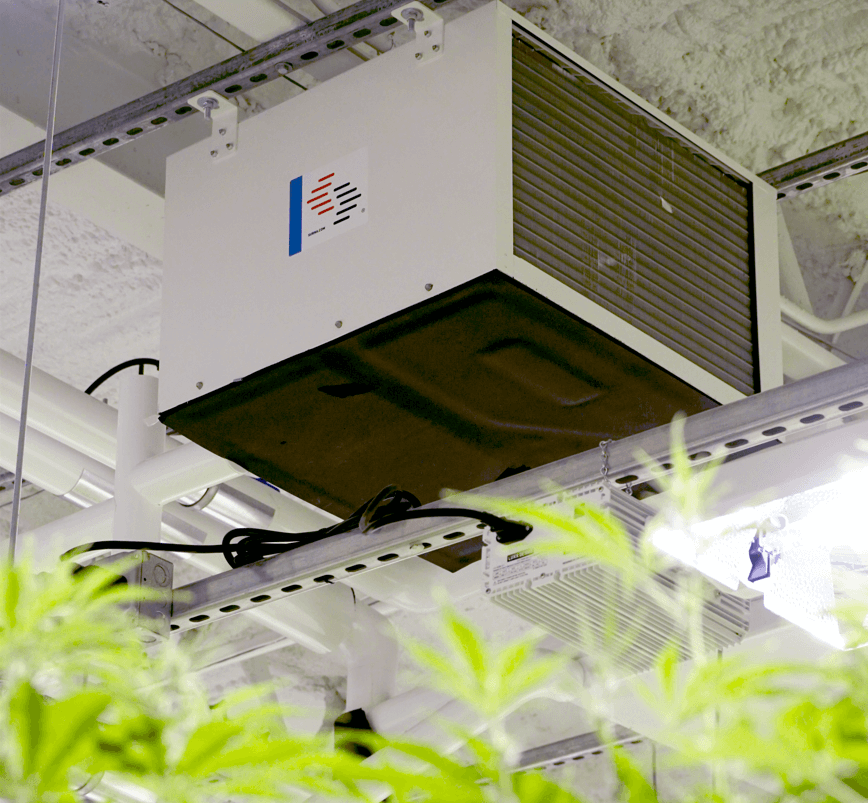
Plants transpire substantial amounts of water, so you must have the ability to control humidity levels at all times, day and night. Without integrated dehumidification or supplemental dehumidifiers, your humidity can easily spike at night when lights are off and temperatures are cooler. This is because your air conditioning won’t be running as hard as it would during lights on, and therefore your humidity will rise even as temperatures fall. These humidity swings will stress your plants and make them more susceptible to disease.
There are several grow room HVACD solutions that can help provide a well-controlled, consistent level of humidity in your grow room. As mentioned, these solutions can be categorized as either integrated or standalone dehumidification. Integrated dehumidification relies on sophisticated modulating valves to accomplish temperature and humidity control within the same equipment, whereas standalone dehumidification uses separate units.
Controls and Automation
While modulating systems may be more energy efficient, they are more complex than traditional on/off units. You will need a means for controlling your equipment, so that each unit can “speak” to one another for a more cohesive climate solution and so you can make adjustments as you see fit.
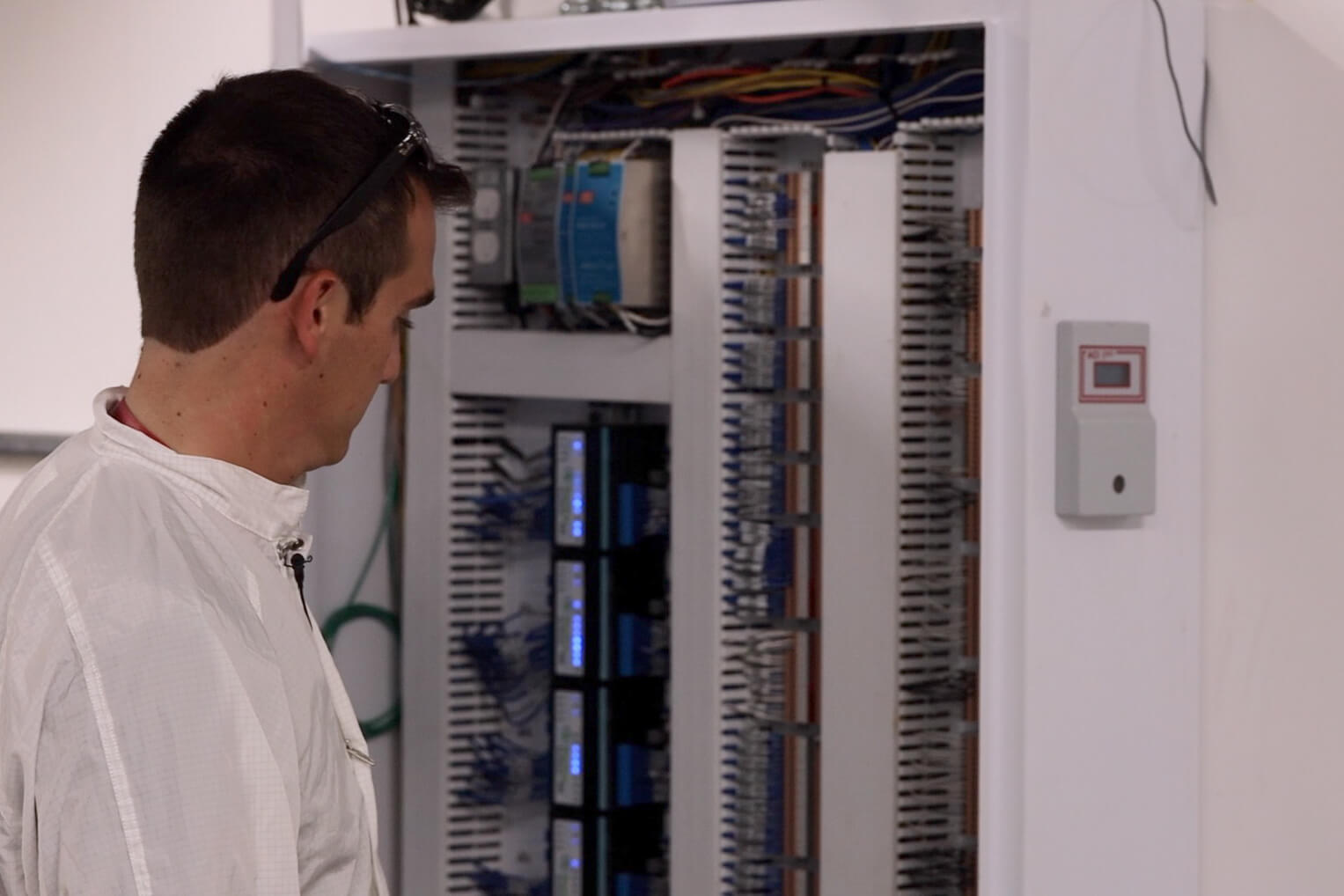
Some equipment will come with a means of equipment control built in, but this is usually standalone control—in these cases, look for systems that are BACnet or ModBus compliant, which allows them to be controlled by a central dashboard. The Building Automation and Control Network (BACnet) standard makes it easier to incorporate into a controls systems integrator, which is a software that can connect multiple systems and devices into one interface. For example, SentryIQ allows growers to monitor their facility’s performance 24/7, manipulate setpoints for temperature, humidity, CO2, ventilation, and lighting, and make adjustments to sequencing to ensure the equipment being controlled is working together for the best result.
At the very minimum, being able to monitor and record your grow room’s temperature and humidity is an important part of understanding your business. Even if you aren’t able to invest in a sophisticated building controls and automation platform, you should consider manually logging temperature and humidity readings when planning your personnel operations. These levels should be regularly logged throughout the day to catch any inconsistencies in an effort to mitigate issues before they occur.
Get Help from the Pro’s
When it comes to indoor cultivation, managing humidity and temperature are some of the most critical factors in achieving the best results. Many growers struggle to maintain the correct humidity levels and temperature for their plants, which can lead to problems such as mold, disease, and poor yields.
At Surna Cultivation Technologies, we offer a wide range of products and services designed to help growers manage their climates effectively. Contact us today to learn more.
